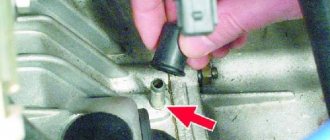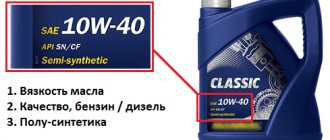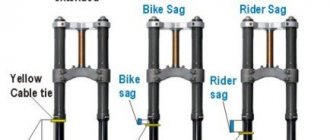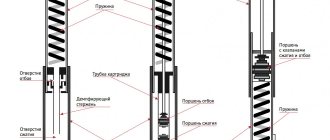A procedure such as changing the oil in a motorcycle fork frightens not only beginners, but also experienced drivers. Even professional mechanics often spend a lot of time doing this job because they have to deal with so many details. In addition, it is necessary to choose the right oil, which will allow you to obtain the necessary parameters of suspension rigidity. Therefore, it is necessary to approach such a procedure only after careful preliminary preparation.
Oil change intervals
Most manufacturers recommend changing the oil in the front suspension of a motorcycle every 12-15 thousand kilometers to ensure that the two-wheeled vehicle maintains good handling. However, experienced owners prefer to replace them simultaneously with scheduled repairs, which include installing new oil seals. This allows you to obtain optimal fork stiffness parameters without having to deal with time-consuming, labor-intensive adjustments.
It is recommended to change the oil after the motorcycle has been idle for the winter, since low temperatures may cause it to partially or completely lose its properties. If the motorcycle participates in sports competitions and the demands on its handling are very high, the frequency of replacing technical fluid should be reduced to 5 thousand kilometers. Experienced drivers recommend changing the fluid when the fork wear becomes noticeable. This is expressed in deep “dive” when braking, as well as in destabilization of the motorcycle at high speed. In such a situation, it is recommended to buy oil of higher viscosity in order to stiffen the suspension and also improve the handling of the two-wheeled vehicle.
Sequencing
In order to understand what kind of oil to pour into the front fork of a motorcycle, read the manual or instructions for your vehicle. This information is very important because oil can have different densities. Therefore, the denser the oil, the stiffer the fork will behave. A rigid fork transmits more vibration, making movement less comfortable. However, the main advantage is the absence of strong shock and deformation of the fork if you catch a hole at high speed.
It will be necessary to very accurately fill the oil to a certain level. There are two ways to do this correctly:
- When removing the fork, measure the former level - this only works if there are no oil leaks or deformation of the glasses;
- Fill exactly the amount indicated in the manual.
A plug that is too airy or overfilled will not function properly. In the first case, the movement of the motorcycle will fail, in the second, the reaction to unevenness will be too noticeable. It is the oil level that determines the volume of the air gap, which interacts with the road. For expensive and sports motorcycles, it is important to know what kind of oil to pour into the front fork of the motorcycle. It comes in viscosities of 2.5, 3.5 and 7.5 W. It is noteworthy that by mixing two oils of different viscosities, you can obtain a medium viscosity.
Remaining oil is removed by moving the piston up and down. If you see a significant excess of service life based on the color and contamination of the drained oil, you need to wash the internal surfaces with kerosene. Having filled in new oil to the previously determined level, you can begin reassembly.
Important! If you have already disassembled the fork, immediately check all the elements for scuffs and damage. A caring motorcyclist immediately changes all boots and seals to prevent leakage in the future, so immediately take care of the availability of spare parts. Particular attention should be paid to inspecting the bushings, which should secure the fork and not interfere with the operation of the seals. Often, a broken bushing gives freedom to oil seals and anthers, which quickly wear out. An inexperienced motorcycle owner changes boots regularly, but does not eliminate the cause of their wear.
Oil selection
Choosing fork oil is very difficult, despite the recommendations of motorcycle manufacturers. The problem is that motorcycle manufacturers often specify ideal viscosity parameters at operating oil temperatures that are many times higher than the temperature at which the fluid is poured into the fork. Therefore, it is necessary to pay attention not only to the standard designation of viscosity, but also to the coefficient of its change with increasing temperature. Such information is often indicated on the canister of liquid, and if it is missing, you will need to pay attention to the manufacturer’s website or to specialized materials published by technical experts.
Since the characteristics of oils from different manufacturers with the same SAE designation can vary significantly, it is better to choose one brand and remain faithful to it in the future. The first change is always made with oil with the same viscosity as specified in the vehicle’s operating instructions. With a significant reduction in fork stiffness, you will need to gradually increase the viscosity - by 2.5W or 5W with each subsequent replacement, depending on your personal preference. Most touring motorcycles recommend 10W oil, while sport and high-performance city bikes recommend 2.5-5W oil.
It is prohibited to use regular motor oil in the fork as it will help achieve the desired damping characteristics. On a canister with a special material you can find the inscription Fork Oil or Suspension Oil. You should beware of fakes, because with low-quality oil in the fork, the motorcycle can become uncontrollable, which will lead to a serious accident.
When choosing fork stiffness, you need to be guided by the type of roads on which the motorcycle will be used. By adding a thicker oil, you will get better damping characteristics and your vehicle will be more stable at high speeds. However, with an increase in rigidity, comfort will significantly decrease - on any major unevenness the driver will feel a “breakdown”, which can even throw the motorcycle off course. On the contrary, insufficiently viscous fork oil will cause significant vibrations, twitching, or even steering pull when cornering.
If the bike will only be used on quality intercity trails and race tracks, there is nothing wrong with significantly increasing the fork stiffness. However, for driving on country roads and city streets with poor quality coverage, such settings are no longer suitable. A special case is replacing technical fluid in a motocross motorcycle. For it you will have to buy a special technical fluid marked “Off-Road” on the canister. Using regular oil for road motorcycles can significantly reduce the energy capacity of the suspension or even lead to its failure.
Why change the oil in your motorcycle fork to a more viscous one?
The oil in the motorcycle fork is changed to a more viscous one to increase the rigidity of the fork. The more viscous the oil in the fork, the harder it handles bumps. That is, a rigid fork is not the most comfortable option for bad roads. But, on the other hand, when driving on bad roads, the fork does not break so often. And the handling improves noticeably, the motorcycle does not bite so much during hard braking, the motorcycle becomes more responsive. In this case, you should take into account the value of oil hardness that the manufacturer recommends in the manual, but, again, there is one “but” here. If the motorcycle is new, of course, you need to pour the oil that the manual recommends (for the Honda cb 400 motorcycle this is oil with a viscosity of 10W). What if it’s not new, and the feathers are already pretty worn out? In short, my advice is to go with your gut feelings. The motorcycle started to nod - that’s it, it’s a symptom, it’s time to think about pouring more viscous oil into the fork.
And for reference. It is recommended to change the oil in the fork of a Honda cb 400 motorcycle every 15,000 kilometers. Oils of different hardness can be mixed, achieving intermediate values. That is, if you really really want 16.5W, you can mix 15W and 20W in appropriate proportions. At the same time, it is natural that the oil should be from the same manufacturer, since chemistry is chemistry, and manufacturing technologies from different manufacturers may differ slightly, and the result in this case is very difficult to predict.
In principle, in my experience, these 15,000 kilometers may not be maintained by combining the oil change in the fork with the replacement of the front shock absorber seals. On the Sibishka, oil seals are still a consumable item, and on our roads they begin to snot quite quickly.
Replacement procedure
Before changing the oil, be sure to look where the lower plug on the fork is located - the principle of performing the entire procedure depends on this. The following options are available:
- Down at the end;
- On the side at the bottom;
- The bottom plug is missing.
If the drain hole is located at the end of the fork, lift the motorcycle onto a support, remove the front wheel and install the rods strictly vertically. The lateral location of the plug allows you to repair the hydraulic system without removing the wheel, although you will have to lift the motorcycle in this case as well. If there is no bottom plug, you will need to remove the fork.
Having decided which oil to pour into the fork, first unscrew the upper plug, and then the lower one, after placing a vessel with a volume of at least 0.5 liters under each shock absorber. If you have to work on a motorcycle without a bottom plug, the removed fork will have to be turned over so that the oil comes out of it through a single hole. After draining the technical fluid, the fork must be washed - a special fluid or regular low-viscosity motor oil is suitable for this. Having done all this, blow the inside of the part with compressed air from a compressor or a special can.
A very important question is how much fluid to add to achieve ideal damping characteristics? The most common recommendations on the Internet suggest using 500 ml of liquid for each shock absorber. However, this is a very rough assumption that can make the motorcycle completely uncontrollable. To optimize the controllability of two-wheeled vehicles, it is worth focusing on such a parameter as the oil level from the top edge of the pipe. You can find it in the vehicle’s operating instructions or in specialized technical literature.
It is worth understanding that an oil pump with a measuring needle that prevents fluid from overflowing costs about $100 - not every motorcyclist is willing to pay such an expense. Therefore, a much better solution would be to build the necessary tool yourself, spending no more than 100 rubles on it. At the pharmacy, buy a 10-cc syringe and a catheter, which is a transparent tube that fits over the nose of the syringe. You will need a length of catheter equal to the distance found in the instructions. It will need to be tightly placed on the syringe spout to prevent oil leakage during operation.
First, you need to pour 500 ml of oil into the fork, or a little more if the catheter does not reach the top edge of the liquid. Then the syringe is applied to the pipe so that the base of its nose coincides with the cut line. All you have to do is pump out the excess oil that will interfere with the suspension adjustment. Remember that this procedure must be performed with the fork compressed in order to be able to accurately determine the required oil level. The cartridge should be installed at this point, but the spring does not need to be installed.
Subtleties of oil change
As you can see, there is no oil filter here. This will negatively affect the life of this engine.
Basically, all economy class pit bikes come without an oil filter. This means that the replacement process boils down to unscrewing the drain plug, jumping on a pit bike, waiting for the oil to drain, and filling in new oil. That's the whole point of this article in one sentence. But there are subtleties.
Irbis TTR 125, RegulMOTO 125, MotorLand 125 and other analogs that are created in this likeness - there is no oil filter.
Choosing engine oil
Specification in the instructions for the RegulMOTO pit bike.
You have to be careful here, most pit bikes come with 4-stroke engines, the instructions for pit bikes say that the oil should have a viscosity of 10W/40 . There are no exact recommendations regarding the type of oil. I use semi-synthetic oil , but you can use fully synthetic oil.
Replacement timing
If you look at the photo above, the manufacturer recommends making the first replacement after 10 engine hours , all subsequent ones every 30 engine hours - regardless of the presence of an oil filter.
Manufacturers
The pouring of Mobil 1 and Motul products is considered a special hype. It may make sense, but such oil costs 800 rubles per liter. I uploaded KIXX - it cost 310 rubles. I didn't feel much difference. Plus - Made in KOREA !
Front side.
Backside.
Manufacturer - KOREA!
Oil specification.
Responsible process
The controllability of the motorcycle, and, consequently, the safety of the driver and others depends on the correct selection of oil for the fork. It is best to follow the recommendations of the motorcycle manufacturer, but increase the viscosity of the technical fluid when components wear in order to achieve good damping characteristics. It is also worth paying attention to the oil change procedure - the ability to adjust the suspension and obtain optimal rigidity depends on its correct implementation. We must not forget about flushing the fork after draining the old oil - drops of technical fluid remaining inside and chips obtained from friction between the components can significantly affect the characteristics of the shock absorbers. If you are not sure that you can perform an oil change and suspension adjustment yourself, contact professional mechanics, since your interventions can only cause harm.











